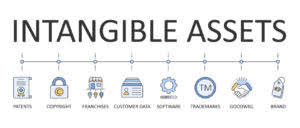During this process, you will enter some basic information, validate your email address, and create a profile, either for your organization or for yourself. Please note that the latest versions of standard forms may produce an alert in your web browser. If you receive an alert, right-click on the link and choose the “Save link as” option to download the PDF form. Our grant-making and philanthropy accelerate progress toward achieving our goals of supporting the community. The following forms are available online from Hofstra College of Liberal Arts and Sciences. A really great way to get into applying for grants and knowing which grants you grant application and other forms apply for.

Check where applicants spend the most time and drop off most. Use this information to streamline your form, ensuring more qualified applications and a larger pool to select from. A grant application can require a lot of supporting documents. This templates contains several file uploads fields, allowing applicants to upload documents. You can add further upload fields to request more documents based on the grant type, example letters of support, resumes of key personnel, organizational charts, projections, and proof of nonprofit status.
Below is a summary of the process with links to detailed instructions on completing each step to apply for grants on Grants.gov. Most grantmakers will use the Common Grant Forms as a stand-alone tool, while others will choose to adapt it to meet the needs of their organization. It is perfectly okay to adapt the Common Grant Forms to your needs and requirements.
Nonprofit Cash Flow Projection Template
- Some grantmakers give applicants the choice of either using the CGA and CGR or a format specified by the grantmaker.
- The process was really easy and intuitive, I would definitely recommend this service to everyone.
- The applicant must email the contact identified in the Contact Information section of the funding opportunity within 24 hours after the application deadline to request approval to submit its application after the deadline.
- Plus, the forms can be filled out online or offline — your choice.
- Before applying, remember you must be registered as an applicant.
- We encourage you to consider providing a 6 – 12 month transition period during which you will accept either the CGA and/or CGR or the foundation’s previous application or reporting requirements.
Other foundations give nonprofits the choice of submitting a Common Grant Form OR an application or final report in a format specific to the grantmaker. You are able to download the forms online, save them to your computer, but then you must submit them to a particular grantmaker. If a grantmaker has an online application and reporting process, they will provide you with specific instructions regarding their process. Grant Forms contains copies of the federal forms currently used by awarding agencies to create grant application packages in Grants.gov, forms for post-award reporting, and forms that have been retired from the system. These include both government-wide and agency-specific forms. The Common Grant Application and Common Grant Report allow Colorado grantmakers and grantseekers to work from a common set of questions that reinforce solid nonprofit practices.
By building a team that represents the millions of Target guests and their needs. By creating joyful and relevant experiences for all consumers to feel welcome and excited to shop with us. And by building meaningful relationships within the neighborhoods we operate, because when our communities thrive, our business does too.
Common Application and Report Forms
There’s no limit to the number of grants and other sources you can submit. We provide the application sources and teach you how to apply. View the Audit Requirements section of the Department of Justice (DOJ) Grants Financial Guide for information about audit report requirements. Information about what the budget narrative should include is available in the Narrative Justification for Every Cost section of the Office of Justice Programs Grant Application Resource Guide. Visit the Application Submission section of the JustGrants Resources website for training and reference materials on how to apply for OVC and other U.S.
- Then, this online form for accepting applications can be shared with the target audience or embedded on the organization’s website.
- Grant makers will in turn conduct their review process and select which proposals to fund.
- You must have active registrations in SAM.gov and Grants.gov before you can apply for any Department of Justice (DOJ) funding opportunity.
- Others give grantseekers the choice of submitting a Common Grant Form OR an application or reporting format stipulated by the grantmaker.
Free Grant Proposal Templates
Efforts related to the Colorado’s Common Grant Forms have occurred on an ad hoc basis based on the interests and energy of grantmakers, technical assistance providers, and grantseekers. Click here for a full list of volunteers involved in the effort. At each step, there were surveys, focus groups, expert working groups, testing, re-testing, piloting, and hours of discussions. The deliberate outreach included nonprofit executives, development staff, neophytes, experts, CEOs of grantmaking organizations, program officers, grants management staff, capacity building trainers, and consultants. The Colorado group contrasted its efforts with others nationally, conducted a comprehensive literature review and then puzzled, scrutinized, reviewed, and debated some more. Visit the “Application and Submission Information” section of the notice of funding opportunity to review the “Proposal Narrative” section, as the page length and other requirements may vary by funding opportunity.
federal government 2500 grant application
These application form templates come with common questions or form fields you would probably like to include in your form. Naturally, this will save you time and help you create better forms and surveys in a shorter time. So, choose one of our free form samples to create professional online forms today. Ask all your grant applicants to complete this simple online form providing you with their name, address, email, and date of birth.
Registering with Grants.gov
The scope of a project, the amount of funding being awarded, the type of grant maker, and other factors influence what is required from grant seekers. If you need to request a budget revision, this template is designed to show how funds will be adjusted by reducing the amounts allotted to one or more categories and increasing funds to others. Some grant makers require a revised budget so that they can approve how funds will be used.
Grant Report Template
This template also includes room for adding organization and grant details. To request a charitable contribution, your organization must be a federally tax-exempt section 501(c)(3) charitable organization, accredited school or public agency located in the United States or one of its protectorates. The logos were created to help identify and brand the Common Grant Forms among grantmakers and nonprofits.
Community and Team Member Engagement
Consider soliciting feedback on your proposal from stakeholders or others who may be less familiar with the project and, therefore, more objective. Taking a moment to review a proposal may help reduce errors or omissions that could cost more time and money in the long run. Accepting the NY/NJ Area Common Grant Report Form is one way. Another is to accept reports from nonprofits that they submitted to a different funder.
.jpg)
.jpeg)
.jpeg)



















